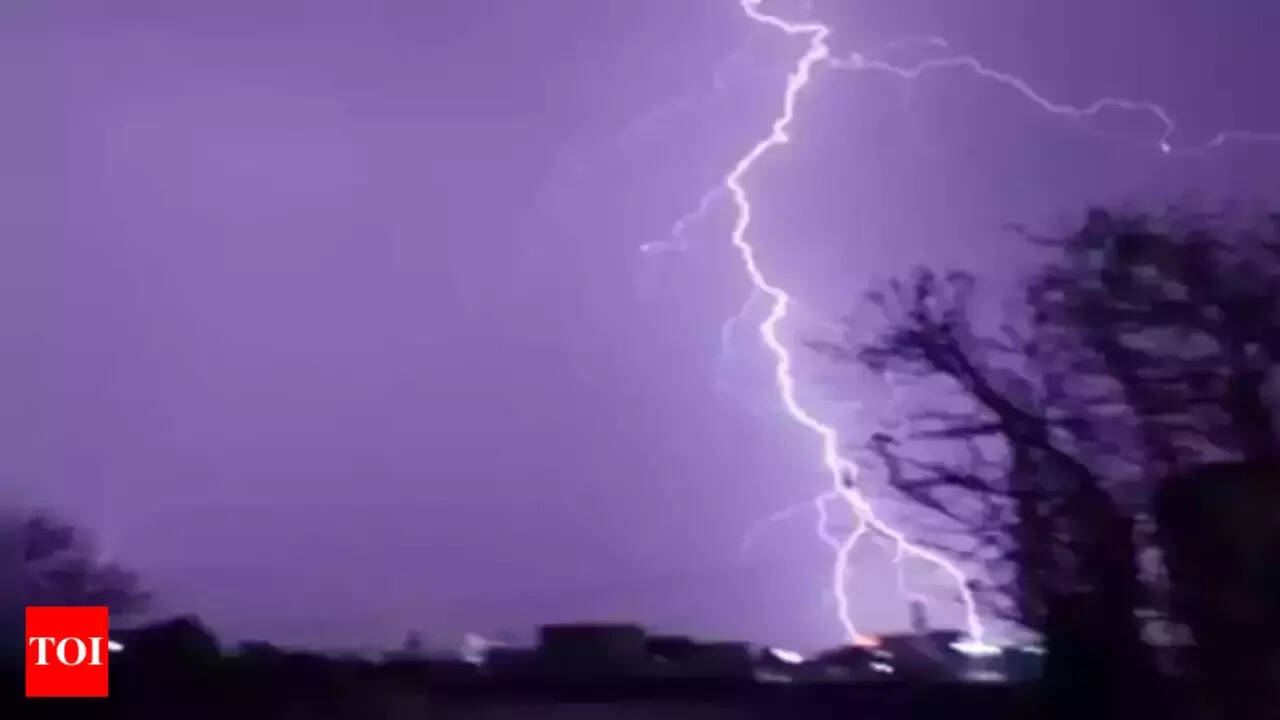TEL AVIV: Israeli researchers have uncovered a compelling connection between thunderstorms and the proliferation of wispy cirrus clouds, potentially accelerating global warming.
The study, led by Professor Colin Price from the Department of Geophysics at Tel Aviv university in collaboration with Anirban Guha and Joydeb Saha from Tripura university in India, sheds light on a previously elusive aspect of climate science. Their findings were recently published in the peer-reviewed Geophysical Research Letters.
“Cirrus clouds, those feathery clouds we see in the sky, significantly impact the earth’s climate,” said Price. “An increase in these clouds acts as a blanket that traps heat, exacerbating global warming. Conversely, a decrease in cirrus clouds allows heat to escape from the atmosphere.”
However, cirrus clouds have remained a challenging subject for climate researchers due to their elusive nature, hampering data collection.
“Being so wispy, they can be invisible to the human eye and even to satellites, plus they form in the upper atmosphere, far from the monitoring stations operating on the ground,” Price explained.
To overcome this challenge, the researchers turned to a surprising source of data: thunderstorms and lightning activity. Thunderstorms generate lightning, which emits detectable light and radio waves that can be monitored from thousands of kilometres away. By correlating data from thunderstorms and cirrus clouds, the researchers discovered a substantial statistical connection.
The study relied on six years of global thunderstorm data collected by Nasa‘s ISS-LIS satellite, which detects lightning emissions. The collected data was then compared with cirrus cloud information, albeit limited, and supplementary models.
Nevertheless, the results revealed a clear relationship between thunderstorm activity and cirrus cloud formation. The quantity of cirrus clouds increased in tandem with the number of thunderstorms, indicating that thunderstorms can serve as a reliable indicator of cirrus clouds in the atmosphere.
“We discovered that thunderstorms play a pivotal role in cirrus cloud formation, with lightning activity accounting for over 70% of changes in cirrus cloud quantity worldwide,” Price said.
“Thunderstorms act as a massive ‘vacuum cleaner,’ lifting moisture from the planet’s surface, particularly over oceans and forests, to higher atmospheric levels. At an altitude of approximately 10 kilometres, this moisture crystallizes into ice, forming cirrus clouds,” he explained.
Moreover, the implications of the study extend beyond the present. Price noted that climate models predict an increase in thunderstorm activity in the coming years, which, if realized, could exacerbate cirrus cloud formation, further accelerating rising temperatures around the world.
“If these predictions hold true, the rise in thunderstorm frequency can be expected to result in a higher quantity of cirrus clouds,” Price said. “These clouds, acting as an ‘atmospheric blanket,’ will further intensify global warming.”
The study, led by Professor Colin Price from the Department of Geophysics at Tel Aviv university in collaboration with Anirban Guha and Joydeb Saha from Tripura university in India, sheds light on a previously elusive aspect of climate science. Their findings were recently published in the peer-reviewed Geophysical Research Letters.
“Cirrus clouds, those feathery clouds we see in the sky, significantly impact the earth’s climate,” said Price. “An increase in these clouds acts as a blanket that traps heat, exacerbating global warming. Conversely, a decrease in cirrus clouds allows heat to escape from the atmosphere.”
However, cirrus clouds have remained a challenging subject for climate researchers due to their elusive nature, hampering data collection.
“Being so wispy, they can be invisible to the human eye and even to satellites, plus they form in the upper atmosphere, far from the monitoring stations operating on the ground,” Price explained.
To overcome this challenge, the researchers turned to a surprising source of data: thunderstorms and lightning activity. Thunderstorms generate lightning, which emits detectable light and radio waves that can be monitored from thousands of kilometres away. By correlating data from thunderstorms and cirrus clouds, the researchers discovered a substantial statistical connection.
The study relied on six years of global thunderstorm data collected by Nasa‘s ISS-LIS satellite, which detects lightning emissions. The collected data was then compared with cirrus cloud information, albeit limited, and supplementary models.
Nevertheless, the results revealed a clear relationship between thunderstorm activity and cirrus cloud formation. The quantity of cirrus clouds increased in tandem with the number of thunderstorms, indicating that thunderstorms can serve as a reliable indicator of cirrus clouds in the atmosphere.
“We discovered that thunderstorms play a pivotal role in cirrus cloud formation, with lightning activity accounting for over 70% of changes in cirrus cloud quantity worldwide,” Price said.
“Thunderstorms act as a massive ‘vacuum cleaner,’ lifting moisture from the planet’s surface, particularly over oceans and forests, to higher atmospheric levels. At an altitude of approximately 10 kilometres, this moisture crystallizes into ice, forming cirrus clouds,” he explained.
Moreover, the implications of the study extend beyond the present. Price noted that climate models predict an increase in thunderstorm activity in the coming years, which, if realized, could exacerbate cirrus cloud formation, further accelerating rising temperatures around the world.
“If these predictions hold true, the rise in thunderstorm frequency can be expected to result in a higher quantity of cirrus clouds,” Price said. “These clouds, acting as an ‘atmospheric blanket,’ will further intensify global warming.”


